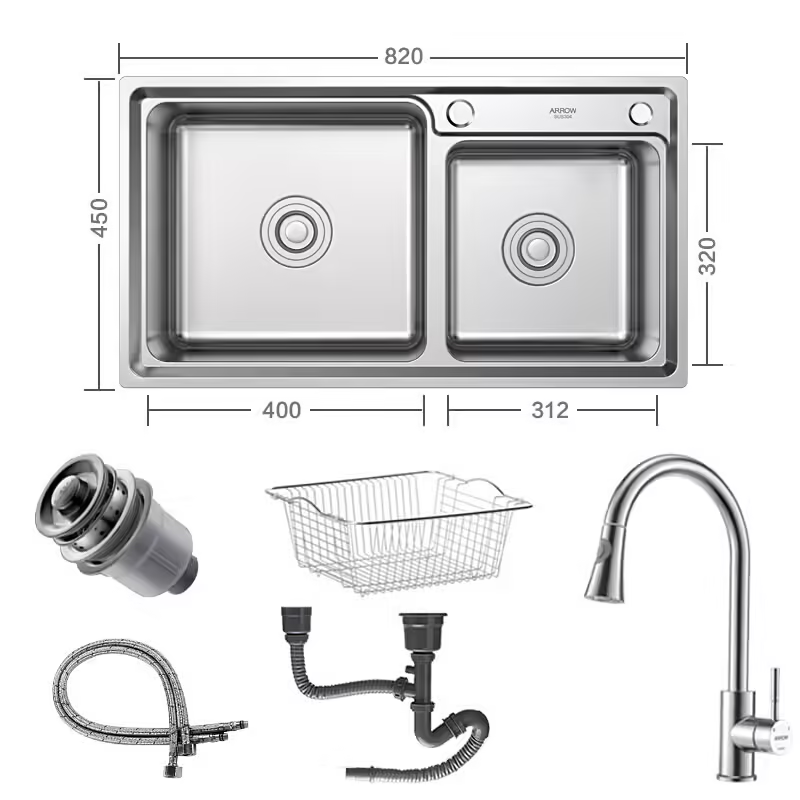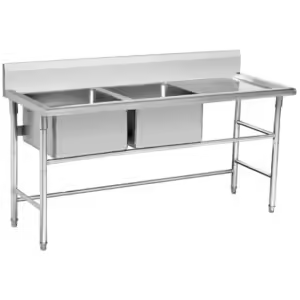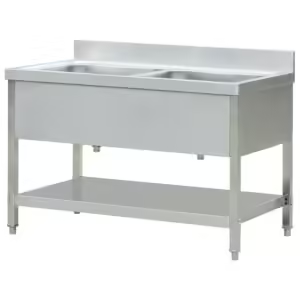
A stainless steel sink is a staple in modern kitchens, known for its durability, sleek appearance, and easy maintenance. But with so many options available, how do you choose the right one? This guide will walk you through the essential factors to consider, and we’ll also answer some frequently asked questions to help you make an informed decision.
Why Choose a Stainless Steel Sink?
1. Durability
Stainless steel sinks are incredibly durable and built to withstand the demands of a busy kitchen. They resist stains, corrosion, and cracks, and they can handle hot pots and sharp utensils without damage.
2. Easy Maintenance
Stainless steel is non-porous, making it easy to clean and resistant to bacteria buildup. A quick wipe with a soft cloth keeps it looking pristine, making it a low-maintenance option for busy homeowners.
3. Modern, Versatile Design
With their sleek, clean look, stainless steel sinks complement both traditional and modern kitchens. They are available in various finishes and styles, allowing you to customize the look to match your design preferences.
4. Cost-Effective
Compared to sinks made from granite, quartz, or cast iron, stainless steel is often more budget-friendly. Its affordability combined with a long lifespan makes it a smart investment.
5. Eco-Friendly
Stainless steel is recyclable, meaning it can be repurposed instead of ending up in a landfill. Choosing a stainless steel sink is an environmentally conscious choice.
Key Features to Look for When Buying a Stainless Steel Sink
1. Gauge (Thickness)
The thickness of stainless steel is measured in gauge. Lower gauge numbers mean thicker steel, which is more durable and less prone to denting. Look for sinks in the 16-18 gauge range for optimal durability and noise reduction.
2. Soundproofing
Many stainless steel sinks come with soundproofing pads or undercoating to minimize the noise when water hits the sink’s surface. This is especially important if you want a quieter kitchen environment.
3. Finish
Stainless steel sinks come in a range of finishes:
- Brushed finish: Excellent for hiding scratches and water spots.
- Polished finish: Provides a high-shine, reflective look.
- Matte finish: A more subtle, sophisticated appearance.
The choice depends on your kitchen style and how much wear you expect on the sink.

4. Bowl Configuration
The configuration of the sink bowl can affect how you use it. Options include:
- Single bowl: Ideal for washing larger items and saving space.
- Double or triple bowls: Offer flexibility, letting you multitask with separate areas for washing, rinsing, or drying.
Choose a configuration that suits your cooking and cleaning habits.
5. Mounting Style
Stainless steel sinks come in three main mounting styles:
- Top-mount (drop-in): Simple to install, with a visible rim on the countertop.
- Undermount: Installed under the countertop for a seamless look and easy cleaning.
- Farmhouse (apron-front): Known for its stylish front-facing design, offering a rustic look with extra space in the basin.
6. Drain Placement
Offset drain placement can make washing easier and maximize space below the sink. This layout also helps prevent clogs and keeps dishes stable when drying on one side.
Care Tips for Your Stainless Steel Sink
Maintaining a stainless steel sink is simple:
- Rinse and wipe down the sink after each use to prevent water spots and buildup.
- Use mild soap and a non-abrasive sponge for regular cleaning.
- Avoid harsh chemicals or steel wool, which can scratch the surface.
FAQs about Stainless Steel Sinks
1. Are stainless steel sinks scratch-resistant?
While stainless steel is durable, it can still get scratches, especially with regular use. However, a brushed or matte finish can hide minor scratches better than a polished finish. Some scratches may blend in over time, and specialized polishes can help reduce their appearance.
2. What gauge is best for a stainless steel sink?
For residential kitchens, a 16- or 18-gauge sink is ideal. These gauges offer the right balance of strength, durability, and noise reduction. Thicker steel (lower gauge) is usually quieter and less likely to dent.
3. How do I prevent water spots on my stainless steel sink?
Water spots can occur from minerals in hard water. To avoid them, dry your sink with a soft cloth after each use. You can also use a stainless steel cleaner or a mixture of water and vinegar for occasional polishing to maintain its shine.
4. Can stainless steel sinks withstand hot pots and pans?
Yes, stainless steel is highly heat-resistant and can handle hot pots and pans without damage. However, avoid direct contact with boiling-hot items for prolonged periods, as this may affect the finish over time.
5. How often should I clean my stainless steel sink?
Ideally, you should wipe down the sink after each use and give it a thorough clean once a week. This helps prevent buildup of minerals, grease, and stains and keeps your sink looking shiny and new.
Conclusion




A stainless steel sink is a fantastic choice for any kitchen, combining practicality with modern style. By considering factors like gauge, soundproofing, finish, bowl configuration, and mounting style, you can find a stainless steel sink that perfectly fits your needs and lifestyle. With proper care, your stainless steel sink will remain a sleek and durable centerpiece in your kitchen for years to come.
